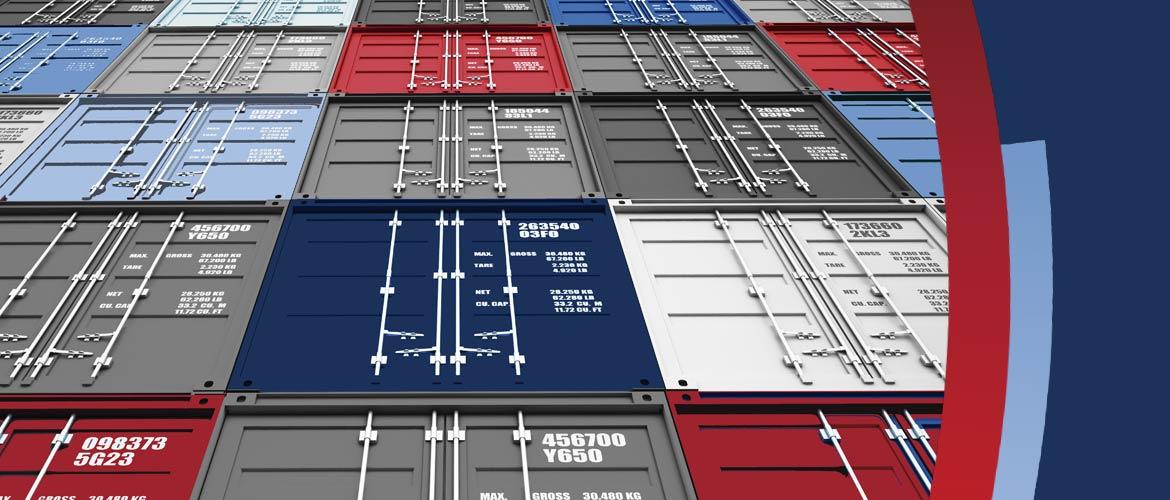

On the 26th of March, Noatum Logistics released an interesting piece titled “What is causing the demand crisis in global trade?” They start the article by talking about the blockage in the Suez Canal and how the delays will be an obvious effect on the supply and transport. 2020 has brought a big demand crisis that is not due to the “Ever Given” and sometimes not as apparent as a Canal being blocked. Read below what they say about the demand crisis…
The striking images of the container ship Ever Given aground in the Suez Canal and the obvious delays in supply on this strategic transport route that this event will cause have once again brought to the forefront a problem that has been having an impact on the global import and export market for some months.
Shipping prices have experienced unprecedented increases, there is a lack of containers and storage space for goods, vessels are queuing for several days to unload at major ports around the world… In overall terms, the situation is one of a collapse in imports and exports that has surprised all the market players. The pandemic and the response of governments and society to the new circumstances are undoubtedly the main reason behind this unusual situation, with effects on the transport of goods we describe in this article.
About a year ago, factories in China halted production due to the lockdowns, so shipping companies started to cancel services and halt ships (Blank Sailing).
When the lockdowns came to Europe and the United States, China began its recovery and as its factories opened, they began to deal with the backlog of orders built up during the first quarter of the year.
In the second quarter of the year, teleworking and lockdowns led to a sudden change in the way European and American consumers purchased goods, with an increase of more than 20% in imports into the United States, and a very strong boom in imports of electronic equipment and consumer goods produced in China. The shipping lines were unable to adapt as quickly to these changes in demand, and as a result, the market experienced a very high increase in import freight rates from the summer onwards, and a lack of equipment and space available for imports from Asia.
The lack of empty equipment for exports began to be noticed in Europe: the largest containers and ships were mostly deployed on the China-USA and China-EU routes.
The capacity of container ships has increased exponentially over the last 10 years. Shipping lines, seeking economies of scale, are using ships with larger capacities – the most recent models are 400 meters long by 80 meters wide and have a capacity of more than 20,000 TEU.
However, port infrastructure has not adapted as quickly to this increase in shipping capacity. The number of ports in the world that are capable of handling these larger ships is limited, leading to bottlenecks at the entrances to international hubs capable of handling these mega-ships.
Two examples of this situation are:
The international hub of Algeciras: this port receives all the exports from Southern and Eastern Europe and some areas of Asia bound for West Africa and the West Coast of South America. Thousands of loaded and stacked containers are currently piled up in the terminals of Algeciras waiting for their transport connection. A full container in transhipment is an expense for the shipping line, and a problem of a lack of empty equipment at another port. To solve this bottleneck, Algeciras is not accepting export cargo until all pending transhipments have been handled, and there are outstanding transhipments to fill all vessels for the next 3-4 weeks.
Dozens of ships are currently anchored outside the ports of Savannah (on the east coast of the United States) and Long Beach (on the west coast) waiting their turn to dock. This waiting time was 24-48 hours before the pandemic and is now more than 10 days. These delays are mainly due to the low levels of efficiency in these ports due to COVID-19 (lockdowns, worker absenteeism and quarantines) and a chronic lack of truck drivers available to move containers in the United States, which further hinders port efficiency. As a result, it is estimated that containers arriving in the United States are taking an average of 63 days to be returned.
The collapse at ports is creating delays on the main shipping lines, making it impossible to offer real transit times to customers, and preventing the use of the equipment that is idle at the terminals. Added to this is the fact that empty equipment is being redirected to the most profitable markets, to the detriment of other markets.
Another reason for the lack of containers is the 35% decline in their production in 2020, but manufacturers in China are working at maximum capacity and a 40% increase is expected in 2021.
In short, even though there is more space/ships on the water than ever in 2021, containers are not where they are needed, and this is creating a domino effect in global logistics that is not expected to stabilize until September this year.
source: https://www.noatumlogistics.com/demand-crisis-global-trade/
What do you think about this article and what are your thoughts on this increasing demand crisis? Will it really take up until September 2021 to stabilize? What are your experiences? Let us know info@projectfreight.net and we might do a follow-up in a few weeks.
Explore how Everok Group is transforming China-Europe logistics with advanced GPS tracking and multimodal solutions.…
Before jumping into solutions, define your #projectmanagement goals. A clear #logistics project definition aligns your…
Strong #leadership and executive #sponsorship are essential in #logistics project management. Without them, even well-planned…
Everokgroup's April 2025 westbound railway freight schedule is now live, offering competitive rates and transit…
Effective project management in logistics ensures timely, cost-efficient deliveries while meeting stakeholder expectations. From definition…
Stablecoins are reshaping #internationalpayments in #logistics and #freight, offering faster transactions and lower costs. As…